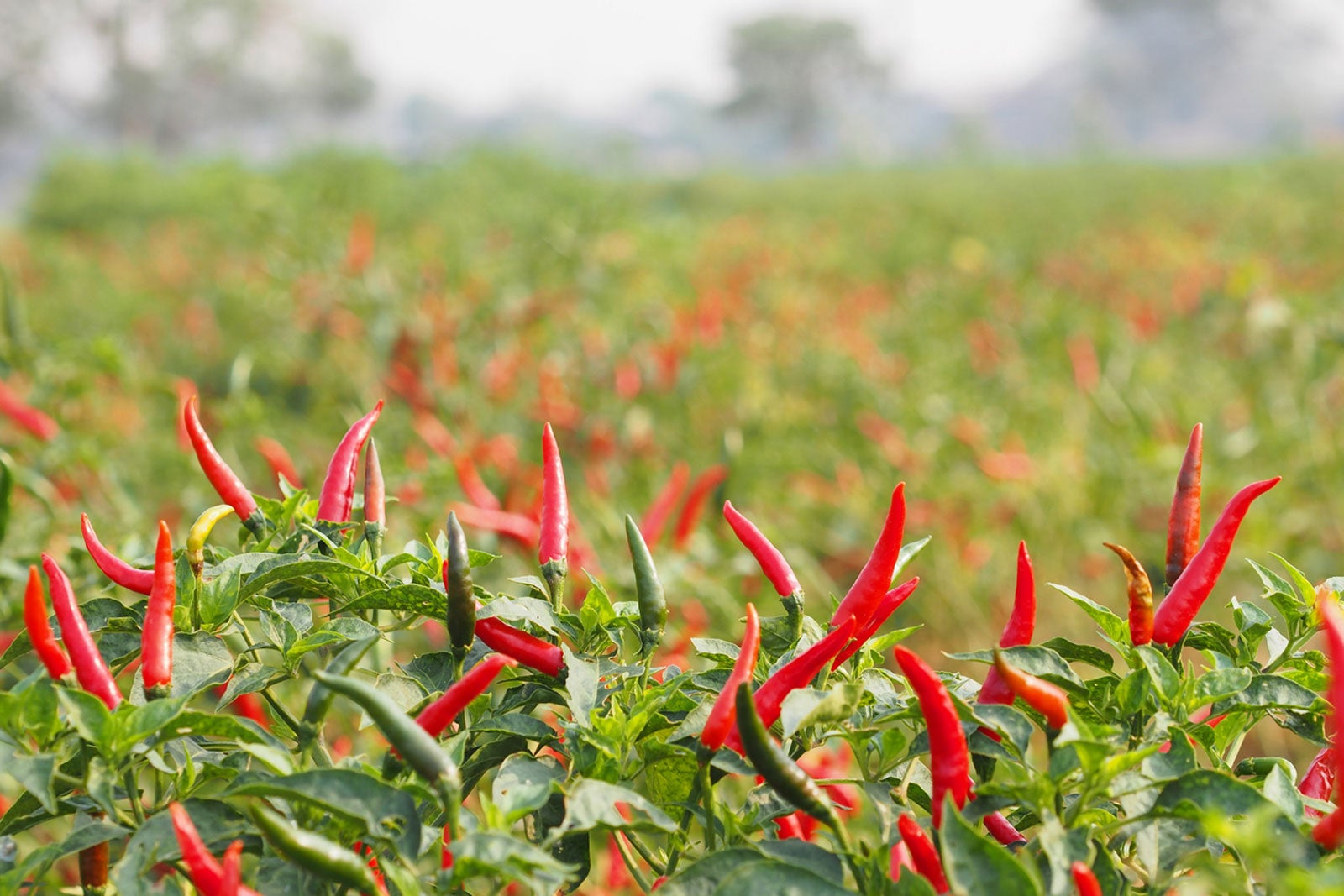Chili Pepper Care: Growing Chili Pepper Plants In The Garden


You may be surprised to learn that growing hot peppers such as jalapeno, cayenne, or ancho didn't originate in Asian countries. The chili pepper, so often associated with Thai, Chinese and Indian cuisine, hails from Mexico. This spicy member of the pepper family has gained worldwide popularity for the pungent sensations it infuses into the foods we love to eat.
How to Grow Chili Peppers
Growing chili pepper plants is similar to growing bell peppers. All peppers grow best in warm soil when the ambient temperature remains above 50 degrees F. (10 C.). Exposure to cooler temperatures inhibit flower production and impedes proper fruit symmetry.
As many climates don't afford a sufficient growing season to direct-seed peppers into the garden, starting chili peppers indoors or purchasing seedlings is often recommended. Start chili pepper plants 6 to 8 weeks prior to the last frost date. Sow seeds ¼ inch (6 mm.) deep in a quality seed-starting mix or use soil-based pellets.
Place seedling trays in a warm location. Many varieties of chili peppers sprout within 7 to 10 days, but hot peppers can be more difficult to germinate than bell types. Once germinated, provide plenty of light and keep the soil evenly moist. Old seed and moist, cold soil can cause damping off in chili seedlings.
Chili Pepper Care
When growing chili pepper plants indoors, regular fertilization and repotting can be beneficial in producing larger, healthier transplants. Aphids can also be problematic at this stage. Using an insecticidal spray can keep these pesky insects from damaging young plants.
After danger of frost, transplant chili peppers into a sunny area of the garden. Ideally, chili peppers perform best when nighttime temps remain between 60 and 70 degrees F. (16-21 C.) and daytime temperatures that maintain around 70 to 80 degrees F. (21-27 C.).
Choose a location with organic rich soil and good drainage. Space chili pepper plants 18 to 36 inches (46 to 92 cm.) apart in rows which are 24 to 36 inches (61 to 92 cm.) apart. Placing peppers closer provides more support for neighboring peppers, but requires more available nutrients for good yields. When transplanting, chili pepper plants can be buried to a depth equaling one third of their stem.
Sign up for the Gardening Know How newsletter today and receive a free copy of our e-book "How to Grow Delicious Tomatoes".
When to Pick Chili Peppers
Many varieties of chili peppers take 75 days or more to mature. Hot weather and drier soil can increase the heat of chili peppers. As peppers approach ripeness, allow soil to dry out between watering. For the most heat, be sure to harvest chili peppers at their peak of ripeness. This can be determined by changes in the color of the pepper and is different for each variety.
Additional Tips When Growing Hot Peppers
- Use row markers when growing hot peppers to identify varieties and distinguish hot from sweet peppers.
- To help prevent contact or accidental ingestion of hot peppers, avoid growing chili pepper plants near areas where small children and pets play.
- Use gloves when picking, handling and cutting hot peppers. Avoid touching eyes or sensitive skin with contaminated gloves.

Laura Miller has been gardening all her life. Holding a degree in Biology, Nutrition, and Agriculture, Laura's area of expertise is vegetables, herbs, and all things edible. She lives in Ohio.